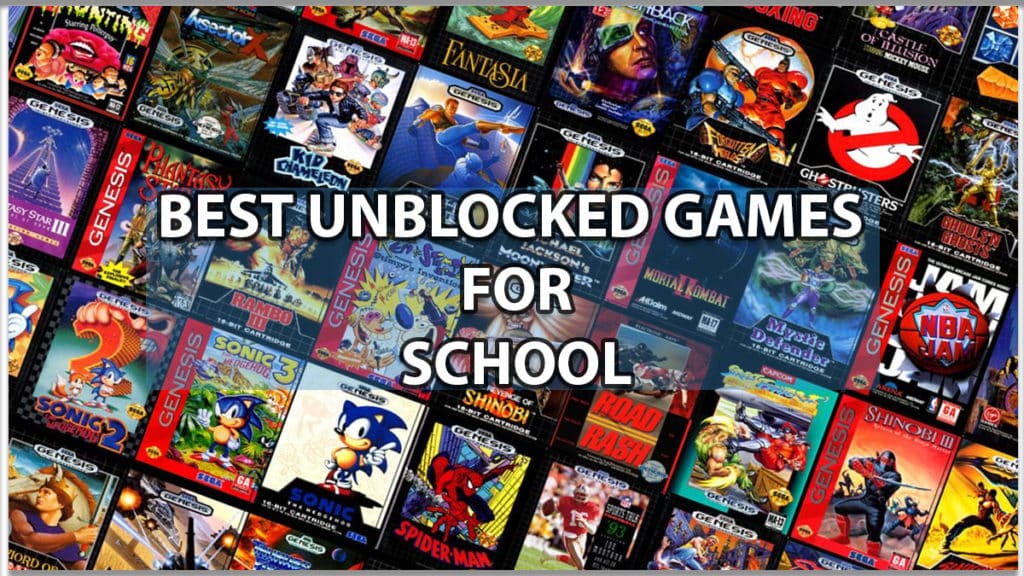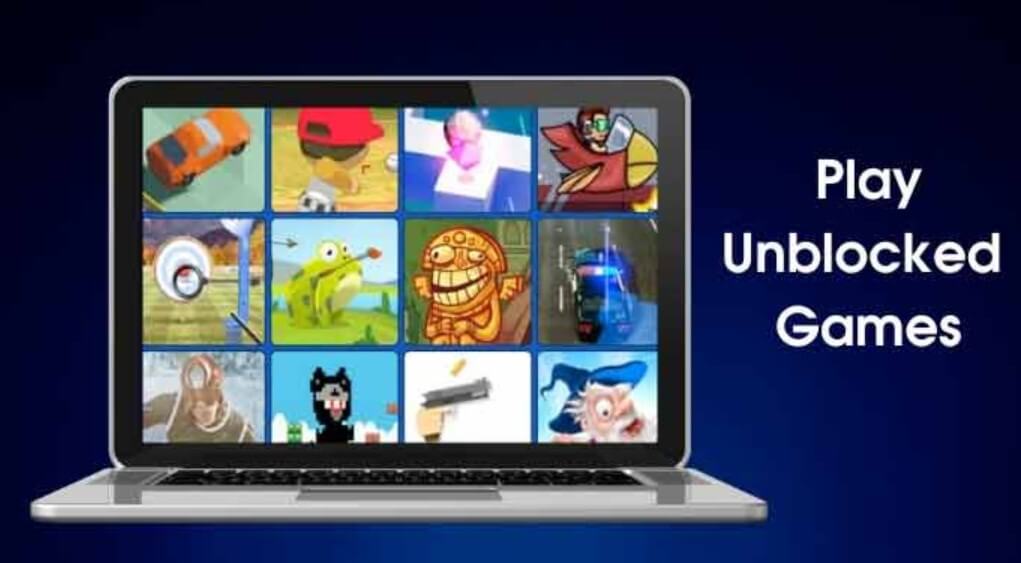The Allure Of Unblocked Games: Exploring The Educational Potential Of In-Class Entertainment
The Allure of Unblocked Games: Exploring the Educational Potential of In-Class Entertainment
Related Articles: The Allure of Unblocked Games: Exploring the Educational Potential of In-Class Entertainment
Introduction
In this auspicious occasion, we are delighted to delve into the intriguing topic related to The Allure of Unblocked Games: Exploring the Educational Potential of In-Class Entertainment. Let’s weave interesting information and offer fresh perspectives to the readers.
Table of Content
- 1 Related Articles: The Allure of Unblocked Games: Exploring the Educational Potential of In-Class Entertainment
- 2 Introduction
- 3 The Allure of Unblocked Games: Exploring the Educational Potential of In-Class Entertainment
- 3.1 Understanding Unblocked Games: A Digital Playground
- 3.2 The Educational Landscape: Examining the Potential of Unblocked Games
- 3.3 Addressing the Concerns: Unpacking the Drawbacks of Unblocked Games
- 3.4 Striking a Balance: Integrating Unblocked Games Responsibly
- 3.5 FAQs: Addressing Common Questions about Unblocked Games
- 3.6 Tips for Integrating Unblocked Games into the Classroom
- 3.7 Conclusion: Embracing the Potential of Unblocked Games
- 4 Closure
The Allure of Unblocked Games: Exploring the Educational Potential of In-Class Entertainment

In the realm of education, the debate surrounding the use of games in the classroom is ongoing. While some view games as distractions, others recognize their potential to enhance learning and engagement. Unblocked games, specifically, have emerged as a peculiar phenomenon, often played discreetly during class time, sparking curiosity about their purpose and impact. This article explores the nature of unblocked games, delves into their potential benefits and drawbacks, and examines their place in contemporary education.
Understanding Unblocked Games: A Digital Playground
Unblocked games are online games accessible without restrictions, typically circumventing school network filters designed to block access to certain websites. They are often hosted on dedicated platforms, readily available through search engines and shared among students. The allure of unblocked games lies in their accessibility and diverse nature, catering to various interests, from arcade classics to strategy puzzles.
The popularity of unblocked games stems from their ability to provide a brief respite from the monotony of traditional learning, offering a quick escape into a world of virtual entertainment. This appeal is particularly strong during periods of downtime or when students find themselves disengaged from the current lesson.
The Educational Landscape: Examining the Potential of Unblocked Games
While the use of unblocked games in class may appear frivolous, it is essential to consider their potential educational benefits.
1. Enhanced Engagement and Motivation:
Unblocked games can serve as a tool to spark student interest and increase engagement in learning. By tapping into students’ innate desire for play and challenge, these games can create a more enjoyable learning environment, motivating them to participate actively.
2. Skill Development and Cognitive Enhancement:
Many unblocked games offer opportunities for skill development, particularly in areas like problem-solving, critical thinking, and strategic planning. Games like chess or Sudoku can enhance logical reasoning and spatial awareness, while arcade games can improve hand-eye coordination and reaction time.
3. Fostering Collaboration and Teamwork:
Certain unblocked games, particularly those with multiplayer options, can facilitate collaboration and teamwork among students. By working together to achieve a common goal, students learn to communicate effectively, negotiate strategies, and share responsibilities.
4. Promoting Creativity and Innovation:
Some unblocked games, such as those involving creative writing or game design, can encourage students to think outside the box and explore their creative potential. They can provide a platform for self-expression and the development of innovative ideas.
Addressing the Concerns: Unpacking the Drawbacks of Unblocked Games
Despite their potential benefits, unblocked games also present challenges that educators must acknowledge and address.
1. Distraction and Time Management:
The primary concern surrounding unblocked games is their potential to distract students from their academic tasks. Excessive game play can lead to decreased focus, reduced productivity, and missed learning opportunities.
2. Content Appropriateness:
Not all unblocked games are appropriate for classroom use. Some may contain violent, mature, or inappropriate content that could be detrimental to the learning environment.
3. Limited Educational Value:
While some unblocked games offer educational benefits, others may lack any significant pedagogical value. It is crucial to select games that align with learning objectives and contribute to the curriculum.
4. Accessibility and Equity:
Access to unblocked games can vary depending on the school’s network policies and students’ access to technology. This can create inequalities in opportunities for engagement and skill development.
Striking a Balance: Integrating Unblocked Games Responsibly
The key to maximizing the benefits of unblocked games while mitigating their drawbacks lies in responsible integration.
1. Curated Selection:
Educators must carefully select games that are appropriate for the age group, aligned with the curriculum, and offer educational value.
2. Time Management and Boundaries:
Establishing clear guidelines regarding the use of unblocked games is essential. Time limits, designated game periods, and consequences for excessive play can help maintain focus and prevent distractions.
3. Open Communication and Collaboration:
Open communication between teachers and students about the purpose and limitations of unblocked games can foster a shared understanding and promote responsible use.
4. Utilizing Games as Learning Tools:
Integrating unblocked games into lesson plans and activities can transform them from distractions into valuable learning resources. For example, a teacher could use a puzzle game to reinforce concepts taught in a math lesson.
FAQs: Addressing Common Questions about Unblocked Games
1. Are unblocked games legal?
The legality of unblocked games depends on the specific game and its content. Most games are legal, but some may violate copyright laws or contain inappropriate content.
2. Are unblocked games safe for students?
Not all unblocked games are safe. Some may contain malware, viruses, or inappropriate content. Educators should carefully vet games before allowing student access.
3. Can unblocked games be used for educational purposes?
Yes, unblocked games can be used for educational purposes. They can enhance engagement, develop skills, and reinforce learning.
4. How can I find appropriate unblocked games for my classroom?
Several websites offer curated lists of educational unblocked games. Teachers can also search for games based on specific learning objectives or subject areas.
5. What are the best unblocked games for students?
The best unblocked games for students depend on their age, interests, and learning objectives. Some popular options include:
- Brain training games: Sudoku, KenKen, Lumosity
- Arcade games: Pac-Man, Tetris, Space Invaders
- Strategy games: Chess, Checkers, Go
- Puzzle games: Candy Crush, Bejeweled, Mahjong
- Educational games: Khan Academy, Cool Math Games, PBS Kids
Tips for Integrating Unblocked Games into the Classroom
1. Set clear expectations and guidelines:
Establish rules and boundaries regarding game use, including time limits, appropriate content, and consequences for misuse.
2. Choose games that align with learning objectives:
Select games that reinforce concepts taught in class or introduce new skills relevant to the curriculum.
3. Incorporate games into lesson plans:
Integrate games into activities, assignments, or even as rewards for completing tasks.
4. Use games for formative assessment:
Observe student engagement, problem-solving strategies, and communication skills during game play to assess learning.
5. Encourage collaboration and teamwork:
Select games that promote teamwork and communication, fostering a collaborative learning environment.
6. Monitor student access and content:
Use school network filters and parental controls to ensure safe and appropriate game access.
7. Communicate with parents and guardians:
Inform parents about the use of unblocked games in class and encourage their support.
Conclusion: Embracing the Potential of Unblocked Games
Unblocked games represent a unique and potentially valuable resource in the modern educational landscape. While their use requires careful consideration and responsible integration, their potential to enhance engagement, develop skills, and foster creativity is undeniable. By embracing a balanced approach, educators can harness the power of these digital playgrounds to create a more engaging, interactive, and enriching learning experience for all students.








Closure
Thus, we hope this article has provided valuable insights into The Allure of Unblocked Games: Exploring the Educational Potential of In-Class Entertainment. We thank you for taking the time to read this article. See you in our next article!
Leave a Reply